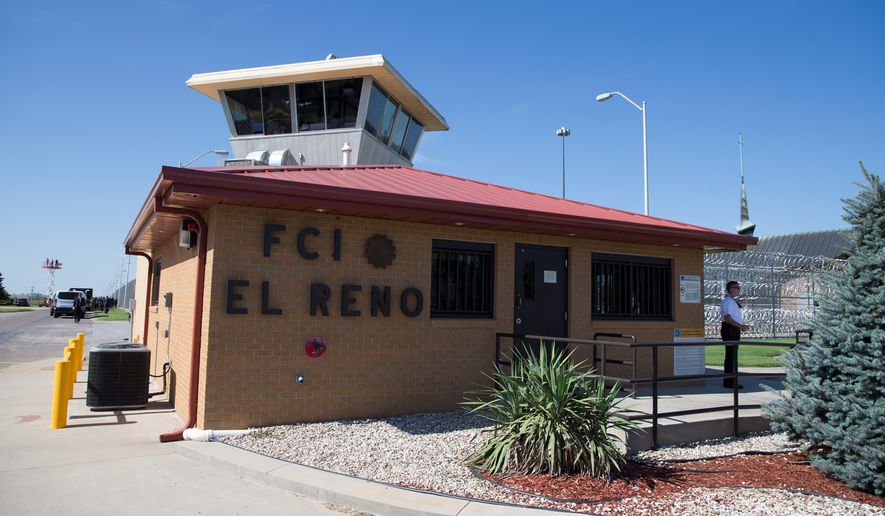The federal government owns or leases 5,066 bathrooms, occupying nearly 1.7 million square feet of the government’s 1.9 billion feet of total office space.
Uncle Sam also controls 16,570 parking lots and garages, more than 1,500 prisons, nearly 17,000 warehouses, 766 hospitals and 2,427 schools, the General Services Administration said Monday, releasing the most complete report ever on the breadth of the federal government’s footprint.
The public database, required by a 2016 law, provides the locations, uses and square footage of nearly every office, facility, park, checkpoint, research lab and communications tower used by the feds.
The bill’s sponsors said now that the government and the public know what’s out there, they can start looking for ways to get rid of some property.
“Billions of dollars are wasted on unused and unneeded federal property, and this is a major portion of our effort to reduce the federal footprint,” said Rep. Jeff Denham, California Republican and chief sponsor of the 2016 law. “The government hid this information for years, and now the public can see just how much our reforms are needed to save taxpayer dollars.”
The 2016 data show that civilian agencies own or lease more than 308,000 assets. Of those that are labeled, recreational facilities, roads and bridges, and reclamation projects are the most common.
PHOTOS: Best rated firearms heading into 2018
But the government also counted more than 16,000 parking lots and nearly 17,000 warehouses, 3,200 public monuments and 419 parks or historic sites, nearly 1,000 border outposts and 421 land ports of entry.
On a smaller scale, the feds said they owned or leased 122 museums, 80 non-Defense Department weapons ranges, 19 child care centers and 18 grazing plots.
Of the more than 5,000 bathrooms, most of them are on federal land held by the Interior Department. Forty-five of them are listed as national historic landmarks, and hundreds more are on, or eligible for, the National Register of Historic Places.
Yet some 20 other bathrooms are listed as not needed now, but are being held for a “future mission need.” Several dozen others were in the process of being disposed of.
The government was also holding onto more than 100 parking facilities it said it didn’t need now but would need in the future.
It’s unclear what the data will mean in practice. The 2016 law that required the report also charged the White House Office of Management and Budget with devising a strategy to streamline properties, pushing agencies to get rid of ones that aren’t needed.
PHOTOS: Most overrated professional athletes
But officials at the White House Office of Management and Budget did not respond to a request for comment Monday.
Alex Tabarrok, an economist at George Mason University, said there is plenty of upside if the government were to get serious about selling off properties.
He sees similarities between the government’s property ownership and its control of the wireless spectrum. It was not until the government started wireless spectrum auctions in 1994 — a move that has added nearly $60 billion to the U.S. Treasury — that the private sector stepped in to use the spectrum for innovations such as Wi-Fi and cellphones.
“Once the government has bought something, it becomes costless because it is off the books,” Mr. Tabarrok said. “There is a very big opportunity cost that is missing. That property could be worth billions if someone turned it into apartments or office building, but we don’t see the value of the land that could be created when the government is just holding it.”
He said the government shouldn’t bother to fix up dilapidated properties, saying the market should decide whether buildings are worth fixing or need to be torn down.
“We are spending billions of dollars in upkeep and maintenance costs, and I’m sure some of these buildings are empty so those costs are just waste,” he said.
Indeed, some 15 properties are listed as “vacant” in the government data. Some of those are being held for “future” needs, while others are still listed as part of a mission.
Kevin Kosar, vice president of policy at the R Street Institute, a Washington-based think tank, said the government’s massive expansion since World War II has saddled it with properties that may be difficult to unload.
“It has really struggled to unload old and unwanted properties which include properties with garages and bathrooms,” he said. “So many of these federal properties sit unused and decaying, and states and localities can’t tax the land beneath them or redevelop them. It is a tragedy.”
The data are maintained by the General Services Administration, which handles most civilian agency property. The data also gave a brief snapshot of military properties.
Combined, the military’s branches and the Army Corps of Engineers own 15.9 million acres of property and lease another 1.2 million acres.
Civilian agencies, meanwhile, reported owning 9.3 million acres. But perhaps the more stunning figure was the total usable space, which came to 1.1 billion square feet.
Mr. Kosar said the government’s rules tend to push agencies to hang on to property. Those looking to slim down their holdings have to transfer ownership to the GSA in order to unload it.
“The intentions behind this policy were to ensure agencies did not sell government assets to cronies and also to harmonize the purchase and sale of federal properties,” he said. “But it has not worked very well and has produced a huge backlog.”
• Stephen Dinan can be reached at sdinan@washingtontimes.com.
• Jeff Mordock can be reached at jmordock@washingtontimes.com.




Please read our comment policy before commenting.